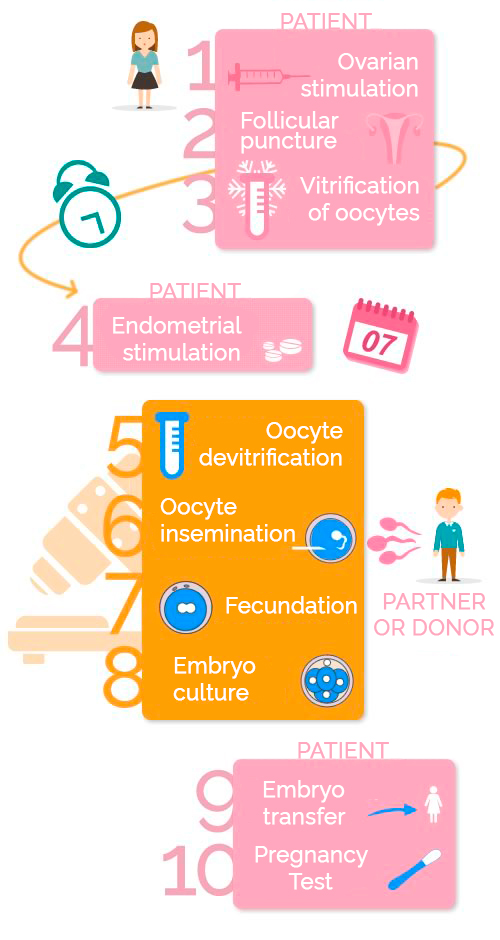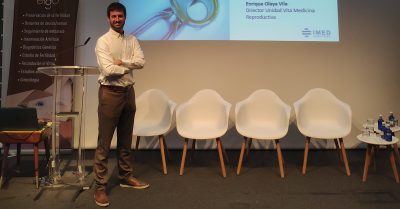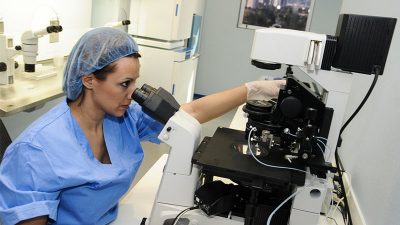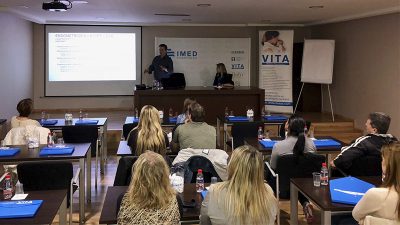Egg vitrification: Preservation of fertility

Egg vitrification is a technique where the patient’s eggs are kept frozen (vitrified) – in order to preserve fertility and delay motherhood – until she is ready to become a mother.
What is egg vitrification??
Currently, many women decide to delay motherhood for personal, family or work-related reasons. However, it must be taken into account that after the age of 35, female fertility decreases since the quantity and quality of the oocytes decrease.
We also find with increasing frequency young women diagnosed with some type of cancer who, after undergoing chemotherapy or radiotherapy treatments, encounter fertility problems derived from cancer treatment.
At VITA, thanks to oocyte vitrification, we have a female fertility preservation program. The eggs are frozen with the help of a cryoprotectant that prevents damage derived from age or toxic treatments.
One of the great advantages of VITA is that it has its own reproductive medicine laboratory equipped with state-of-the-art systems and technology, complying with the ISO 9001 quality certificate.
Treatment begins with ovarian stimulation, where a series of hormones similar to those produced by the woman herself (gonadotropins) are used. The objective is to achieve the development of several follicles to obtain numerous ovules and thus increase the chances of success. Stimulation is checked periodically by ultrasound scans and blood tests.
Once several follicles have reached the appropriate size (18 mm in diameter), the hCG hormone is administered to trigger the final maturation of the ovules, which will occur 34-36 hours later and that is when the follicular puncture will be performed.
With the patient under sedation, the fertility specialist retrieves the mature eggs by follicular puncture through the vagina. Egg retrieval is a minimally invasive procedure that typically takes less than 15 minutes. Generally, patients can resume their normal activities the next day.
Vitrification is a technique in which cells are frozen ultra-fast (it goes from 37ºC to -196ºC in a few seconds). With the help of specific means (cryoprotectants) the water inside the ovules is partially removed so that the cellular structures are not damaged by the formation of crystals. Vitrified eggs are stored in suitable tanks filled with liquid nitrogen that will keep them at -196ºC.
When the woman wishes to use her ‘cryopreserved’ or frozen eggs, endometrial stimulation will be scheduled prior to thawing. At the moment the patient menstruates, she will begin the estrogen treatment, in increasing doses, in order for the endometrium to achieve the appropriate thickness, which will be assessed by vaginal ultrasound scans.
Once the patient’s endometrium has grown, the eggs can be thawed for in vitro fertilization. The patient’s eggs remain ‘cryopreserved’ through the vitrification process and stored in suitable tanks filled with liquid nitrogen and kept at -196ºC. In order to thaw them, they are warmed up to a body temperature of 37ºC.
At VITA, we have the infrastructure and the specialized human team necessary to carry out the cryopreservation of ovules using the latest techniques (vitrification), as well as their subsequent thawing.
Once the oocytes are thawed, the sperm of the partner or of a sperm bank anonymous donor is prepared. This is known as sperm capacitation.
In the laboratory the semen sample is filtered using washing techniques. That is where the sperm with the highest motility will be selected.
The VITA biomedical team will decide, based on the history and characteristics of the patient, which insemination technique (IVF or ICSI) is the most appropriate.
Through conventional IVF, in a laboratory dish the retrieved oocytes and the capacitated spermatozoa are brought into contact, and one of the latter is expected to autonomously fertilize the oocyte.
Through ICSI (intracytoplasmic sperm injection), the embryologist introduces a selected spermatozoon from the semen sample into each egg with the help of a micromanipulator and a microneedle, directly in the laboratory.
The day after the insemination, the fertilization of the oocytes is monitored. The ones correctly fertilized will be kept in the laboratory under observation for several days (between 2 and 5 days).
Day by day the division of the embryos into an increasing number of cells will be observed.
The resulting embryos with the appropriate morphological characteristics will be the ones transferred to the maternal uterus. Surplus embryos will be ‘cryopreserved’ or frozen.
The gynecologist will use a small catheter to guide the embryos through the cervix and into the uterus. The embryo transfer procedure lasts a few minutes and patient recovery time is minimal.
To facilitate embryo implantation, progesterone is administered vaginally to support the luteal phase.
Normally the embryos are frozen on day 5 of embryonic development, so the pregnancy test will be carried out by means of a blood test 10 days after the embryo transfer.
If the patient suffers from bleeding before the test is performed, it is important that she never stops taking the medication and that she contacts the medical team for advice.
Throughout the treatment, her personal assistant will be available at all times to answer any questions she may have and support her in this very special moment.

For whom is this technique indicated?
Egg vitrification is indicated for
- Young women who want to delay their maternity.
- Young women who are going to receive chemo and/or radiotherapy treatments.
- Young women with severe endometriosis who want to reduce the effects of this disease on their ovarian reserve.
- Women suffering from an autoimmune disease.
- Couples who are going to undergo an in vitro fertilization treatment and do not wish to cryopreserve embryos.




